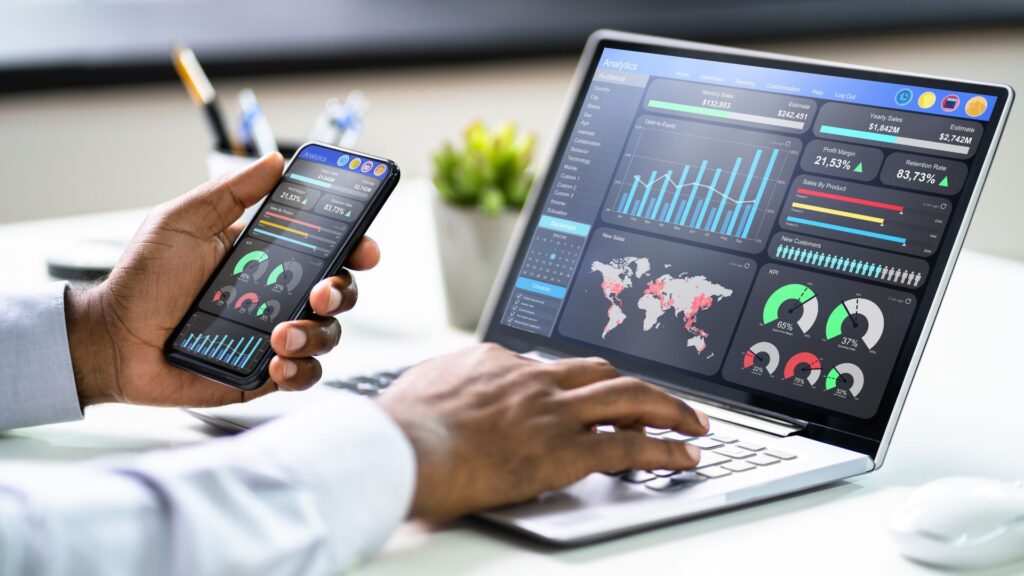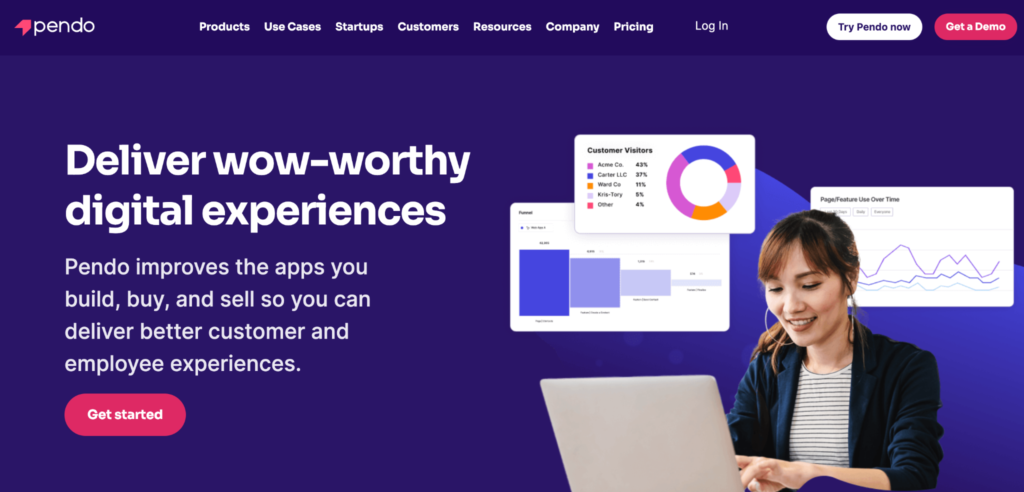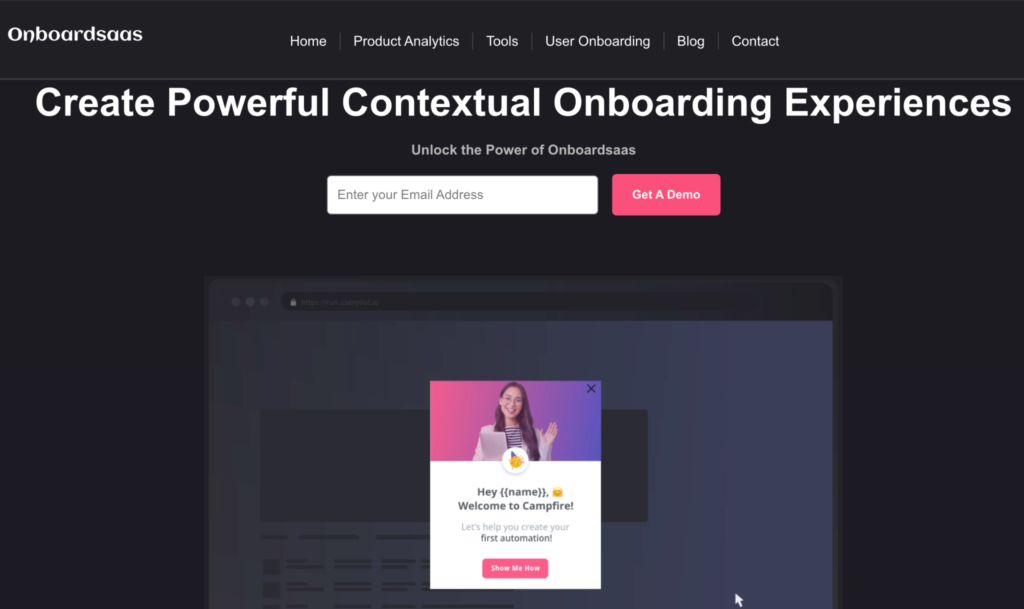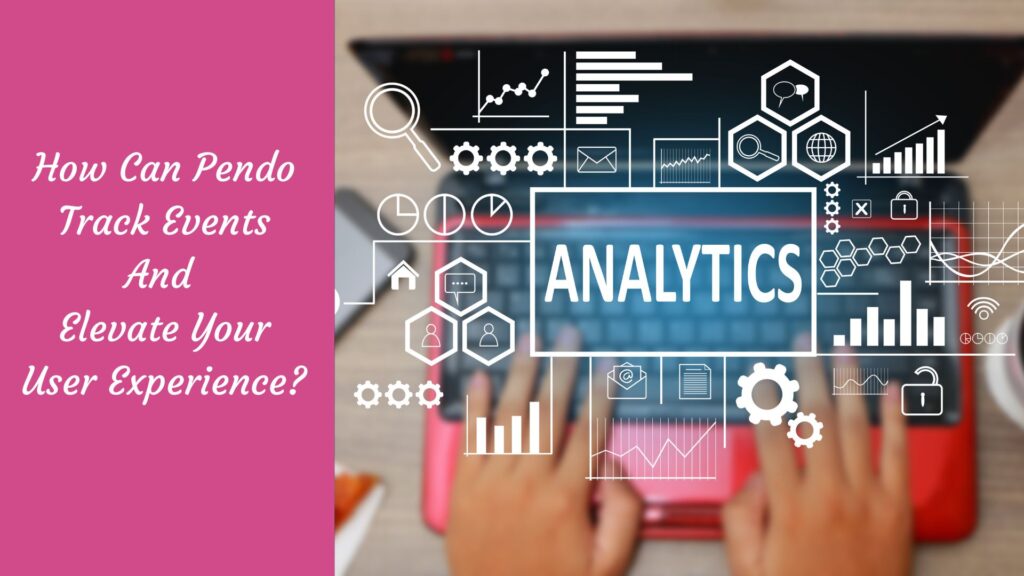In today’s fast-paced digital world, unlocking the secrets of user experience (UX) is the key to success for any digital product.
And guess what?
We’ve got just the tool to take your UX to the next level: Pendo’s event tracking feature! 🚀
By diving deep into users’ behavior, engagement, and interaction patterns, Pendo’s event tracking empowers product teams like never before. It’s a game-changer that can drive user engagement and revolutionize the overall user experience.
So, whether you’re a data whiz or a curious product manager, buckle up and get ready to discover the untapped power of Pendo’s event tracking! 💪
What is an Event Tracking System?

An event tracking system is a powerful tool designed to capture, analyze, and report on specific actions or ‘events’ performed by users when interacting with a digital product.
These actions can range from clicking a button to filling out a form to watching a video or making a purchase.
Let’s break this down with some examples:
- Pageviews: This is a fundamental metric tracked by most analytics tools. Each time a user visits a page on your site, it’s logged as an event. It can help you understand which pages in your site are most visited and where users spend the majority of their time.
- Button Clicks: Maybe there’s a ‘Sign Up’ or ‘Buy Now’ button on your site. Event tracking can let you know how many users are clicking this button, providing insights into the effectiveness of your call to action.
- Form Submissions: If you have forms on your site, like a contact or signup form, tracking these submissions can help you understand the conversion rates and identify any barriers users might be facing.
- Video Views: If your site hosts video content, you can track how many users are watching the videos, how long they watch for, and whether they finish the content.
Understanding Pendo’s Event Tracking

At its core, Pendo’s event tracking system is designed to monitor, record, and make sense of user events within your digital product. It meticulously captures each interaction, providing insights into the user’s journey.
This information is then compiled and transformed into actionable data, empowering businesses to make informed decisions.
For instance, let’s envision a scenario where your digital product is an e-commerce app:
- Product Searches: Pendo can track the number of product searches conducted on your app. It gives an understanding of user engagement levels as well as the popularity of various products.
- Add to Cart: Pendo can monitor how many users are adding items to their shopping cart. It could offer insights into potential purchases and the overall shopping behavior of your users.
- Checkout Process: By keeping tabs on how many users actually complete the checkout process after adding items to their cart, Pendo can help identify any issues in the checkout process that may be causing users to abandon their carts.
- Customer Feedback: Pendo can also track user interactions with customer feedback forms or surveys. It can provide precious insights into user satisfaction and areas for improvement.
Pendo track events in 5 simple steps:

1️⃣ Define the events you want to monitor within your digital product.
2️⃣ Set up the tracking system to record each interaction meticulously.
3️⃣ Capture user events to gain valuable insights into their journey.
4️⃣ Analyze the recorded data to make sense of user behavior.
5️⃣ Utilize the insights to optimize your product’s performance. 🚀
Pendo track events and unlock the power of user data!
Pendo’s event tracking system, therefore, paints a vivid picture of the user’s journey, illuminating the path to enhancing user experience and optimizing product performance.
It’s not just about collecting data but about understanding the story that data tells – a story that can lead to more engaging, efficient, and successful digital products. 🌟
Importance of Event Tracking

In the digital age, event tracking has become an integral part of enhancing and optimizing user experiences. Here’s why event tracking is so important:
- Understanding User Behavior: Event tracking allows you to see how users interact with your product. It provides valuable insights into what functions are being used, the navigation patterns, pages visited, and much more. For example, a sudden drop in page views for a specific page could indicate that users are having difficulty accessing it, prompting you to investigate and resolve the issue.
- Improving User Engagement: By tracking events such as video views or form submissions, you can gauge the level of user engagement and take steps to improve it. If a tutorial video on your site has a high drop-off rate, you might consider making it more engaging or breaking it down into shorter, more digestible segments.
- Optimizing Conversion Funnel: Event tracking can help identify any obstacles in the user’s journey that may be hindering conversions. If users are frequently abandoning the purchase process at the shipping information stage, this could indicate that your shipping costs or options are not competitive, signaling a need for reassessment.
- Personalizing User Experience: Event tracking can help create personalized experiences for users based on their behavior and preferences. If a user frequently visits a particular category of products, showing them related products or offers could enhance their experience and potentially lead to increased sales.
- Testing and Iterating: Event tracking provides the data necessary for A/B testing different features, layouts, or content, allowing you to continually refine and improve your product based on real user feedback and behavior.
13 Must-have Features Of an Event-tracking Tool

When selecting an event-tracking tool for your digital product, there are certain critical features that you should look for to effectively analyze user behavior and optimize the user experience.
Below are the 13 must-have features of an event-tracking tool:
- Real-time Data: The tool should offer real-time tracking to provide instant insights into user behavior. It allows for swift action when anomalies or significant events occur.
- User Segmentation: The ability to segment users based on various parameters like geographic location, device type, or behavior patterns allows for more targeted analysis and personalized experiences.
- Event Visualization: Visualization aids in interpreting the data. Look for a tool that provides clear, intuitive charts or graphs to represent user events.
- Heatmaps: Heatmaps allow you to understand where users are clicking or spending time on your website or app, providing visual insights into their behavior.
- Funnel Analysis: This feature allows you to identify the steps users take leading to a conversion or drop-off, enabling you to optimize the user journey.
- User Journey Tracking: Understanding the path a user takes through your app or website helps to optimize UX. Look for a tool that can map out these journeys.
- Retention Analysis: A tool should have the capability to track the retention rate of users to help identify the features that keep users coming back.
- Integration Capabilities: The tool must be able to seamlessly integrate with other platforms your product is using, such as CRM or email marketing software.
- A/B Testing: This functionality enables you to test different versions of a feature or webpage to determine which performs better.
- Custom Event Tracking: The ability to define and track custom events is crucial for capturing actions unique to your product.
- Data Export: Choose a tool that allows data export for further analysis or for use in other platforms.
- Privacy and Compliance: The tool must adhere to global privacy laws and regulations, such as GDPR, to ensure user data is handled securely and ethically.
- Responsive Support: Lastly, reliable and responsive customer support is essential in case there are challenges or queries while using the tool.
A powerful event-tracking tool is not just about capturing data—it’s about capturing the right data and turning that data into actionable insights. Pendo’s event tracking offers all these features and more, making it a comprehensive solution for all your user experience optimization needs.
15 Best Analytics Tools For Web Application Event Tracking

In the realm of web application event tracking, there is a wealth of powerful tools designed to optimize user experience by gathering and analyzing user interaction data.
Here are the top 15 analytics tools that stand out in the industry:
- Pendo: Known for its user-friendly interface and robust feature set, Pendo is a great tool for tracking user events in real-time, segmentation, and visualization.
- Google Analytics: A staple in web analytics, Google Analytics tracks user behavior traffic sources and delivers comprehensive reports.
- Mixpanel: Mixpanel excels in user segmentation and funnel analysis. It also provides A/B testing and retention analysis.
- Amplitude: Offers user behavior tracking, funnel analysis, and user journey tracking. Its standout feature is its micro-funnel analysis.
- Heap: Heap shines with its automatic tracking of all user interactions, reducing the need for manual event setup.
- Kissmetrics: Focusing on individual users, Kissmetrics provides detailed insights into how users are interacting with your product.
- Crazy Egg: Known for heat maps, Crazy Egg also provides scroll maps and A/B testing.
- Hotjar: Hotjar offers intuitive heatmaps and user journey tracking. It also records user interaction videos for more in-depth analysis.
- Optimizely: Primarily an A/B testing tool, Optimizely also offers event tracking and user segmentation.
- Matomo: A great privacy-conscious option, Matomo offers event tracking, funnel analysis, and A/B testing without compromising user data privacy.
- Segment: Segment simplifies data collection by serving as a hub that collects, categorizes, and routes data to other tools.
- Looker: Looker provides robust data exploration features. It’s excellent for businesses with large, complex datasets.
- Adobe Analytics: Offering detailed user segmentation, Adobe Analytics also provides real-time analytics, funnel analysis, and custom event tracking.
- FullStory: FullStory offers high-quality session replays, heatmaps, and funnel analysis. It’s a great tool for visualizing user experience.
- Mouseflow: Mouseflow tracks clicks, mouse movement, scrolls, forms, and more. It also offers session replays and heatmaps.
Each of these tools offers unique features and strengths, making them the cream of the crop when it comes to web application event tracking. Selecting the right tool comes down to understanding your specific needs and goals. 🔍💪
Remember, an effective analytics tool doesn’t just collect data—it turns data into actionable insights that drive improvement and growth. 📈🚀
Best tracking tools for website analytics:onboardsaas.com

At OnboardSaaS, we understand the importance of tracking and analyzing website analytics effectively.
OnboardSaaS.com: A top-notch user onboarding tool, OnboardSaaS. offers five key features:
1. Interactive Onboarding: Engage users with interactive and personalized onboarding experiences, ensuring a smooth transition to your product.
2. User Segmentation: Segment users based on their behavior, demographics, or any other custom criteria, allowing targeted onboarding and personalized messaging.
3. Analytics & Insights: Gain valuable insights into user onboarding, measure success metrics, and make data-driven decisions to optimize the onboarding process.
4. Customization: Customize the onboarding experience to align with your brand identity, ensuring a cohesive and memorable user journey.
5. Automation: Automate onboarding tasks and processes, saving time and effort while delivering a consistent and efficient onboarding experience.
These features make OnboardSaaS.com an excellent choice for businesses seeking a comprehensive and effective user onboarding solution.
Each of these tools provides a unique approach to website analytics, making them valuable in different contexts. ✨
At OnboardSaaS, we recommend choosing a tool based on your specific needs, whether that’s deep user segmentation, real-time analytics, or a focus on user data privacy. 📊🔍
Remember, an effective analytics tool should not just collect data but turn it into actionable insights that drive improvement and growth. 🚀💡
Conclusion
Web application event tracking is a game-changer! 🚀 It’s the key to understanding user behavior and optimizing their experience.
With powerful analytics tools, businesses unlock valuable insights into user interactions, making informed decisions for growth. Real-time analytics, advanced data exploration, and privacy-conscious tracking – the possibilities are endless! 🌟
So, keep tracking and keep growing! Stay ahead in the competitive world of online business. Explore the options and find the perfect fit for your organization. Let’s make your journey a success! 💪

